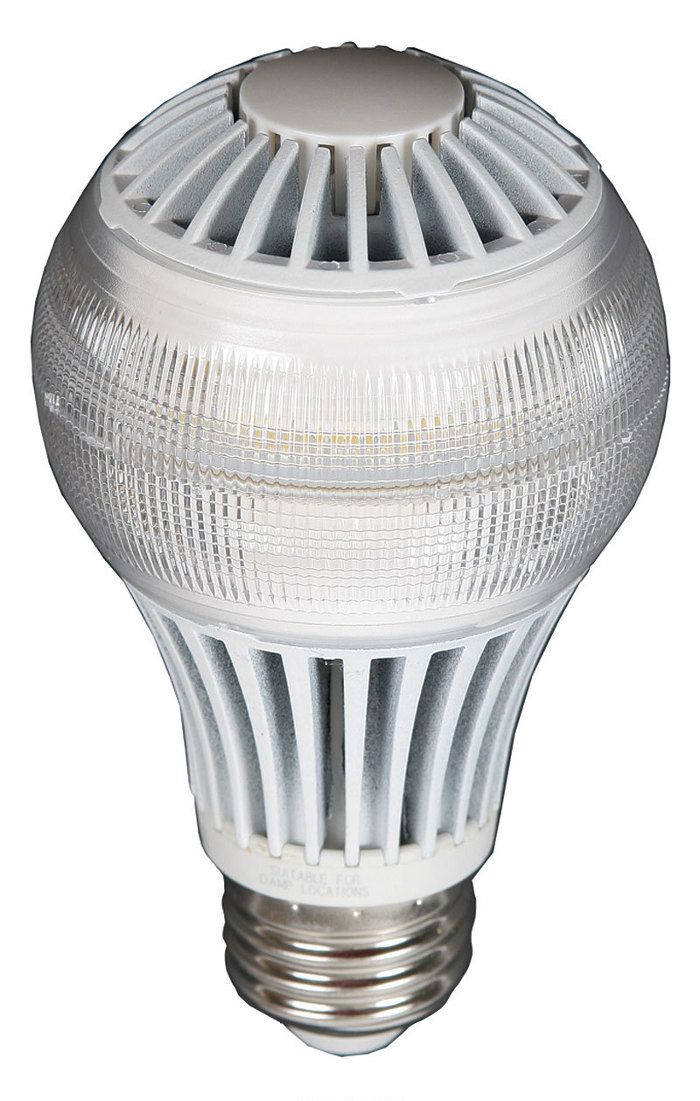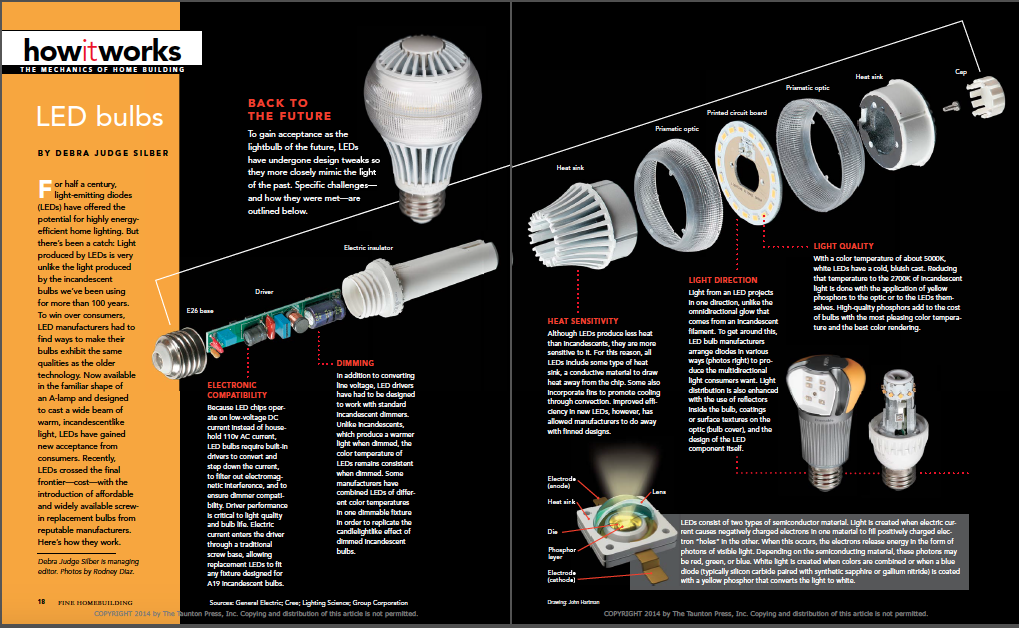LED Bulbs
To gain acceptance as the lightbulb of the future, LEDs have undergone design tweaks so they more closely mimic the light of the past.

Synopsis: The single greatest challenge LED technology has faced is the light produced is very unlike the light produced by the incandescent bulbs we’ve been using for more than 100 years. LED manufacturers have introduced the familiar shape of an A-lamp, screw-in bulb, designed to cast a wide beam of warm, incandescentlike light. Managing editor, Debra Judge Silber shows how they work.
For half a century, light-emitting diodes (LEDs) have offered the potential for highly energy efficient home lighting. But there’s been a catch: Light produced by LEDs is very unlike the light produced by the incandescent bulbs we’ve been using for more than 100 years. To win over consumers, LED manufacturers had to find ways to make their bulbs exhibit the same qualities as the older technology. Now available in the familiar shape of an A-lamp and designed to cast a wide beam of warm, incandescent like light, LEDs have gained new acceptance from consumers. Recently, LEDs crossed the final frontier—cost—with the introduction of affordable and widely available screw in replacement bulbs from reputable manufacturers. Here’s how they work.
BACK TO THE FUTURE
To gain acceptance as the lightbulb of the future, LEDs have undergone design tweaks so they more closely mimic the light of the past. Specific challenges and how they were met are outlined below.
ELECTRONIC COMPATIBILITY
Because LED chips operate on low-voltage DC current instead of household 110v AC current, LED bulbs require built-in drivers to convert and step down the current, to filter out electromagnetic interference, and to ensure dimmer compatibility. Driver performance is critical to light quality and bulb life. Electric current enters the driver through a traditional screw base, allowing replacement LEDs to fit any fixture designed for A19 incandescent bulbs.
DIMMING
In addition to converting line voltage, LED drivers have had to be designed to work with standard incandescent dimmers. Unlike incandescents, which produce a warmer light when dimmed, the color temperature of LEDs remains consistent when dimmed. Some manufacturers have combined LEDs of different color temperatures in one dimmable fixture in order to replicate the candle light like effect of dimmed incandescent bulbs.
 To continue reading about how LED bulbs work and to access photos, click the View PDF button below.
To continue reading about how LED bulbs work and to access photos, click the View PDF button below.
From Fine Homebuilding #239





